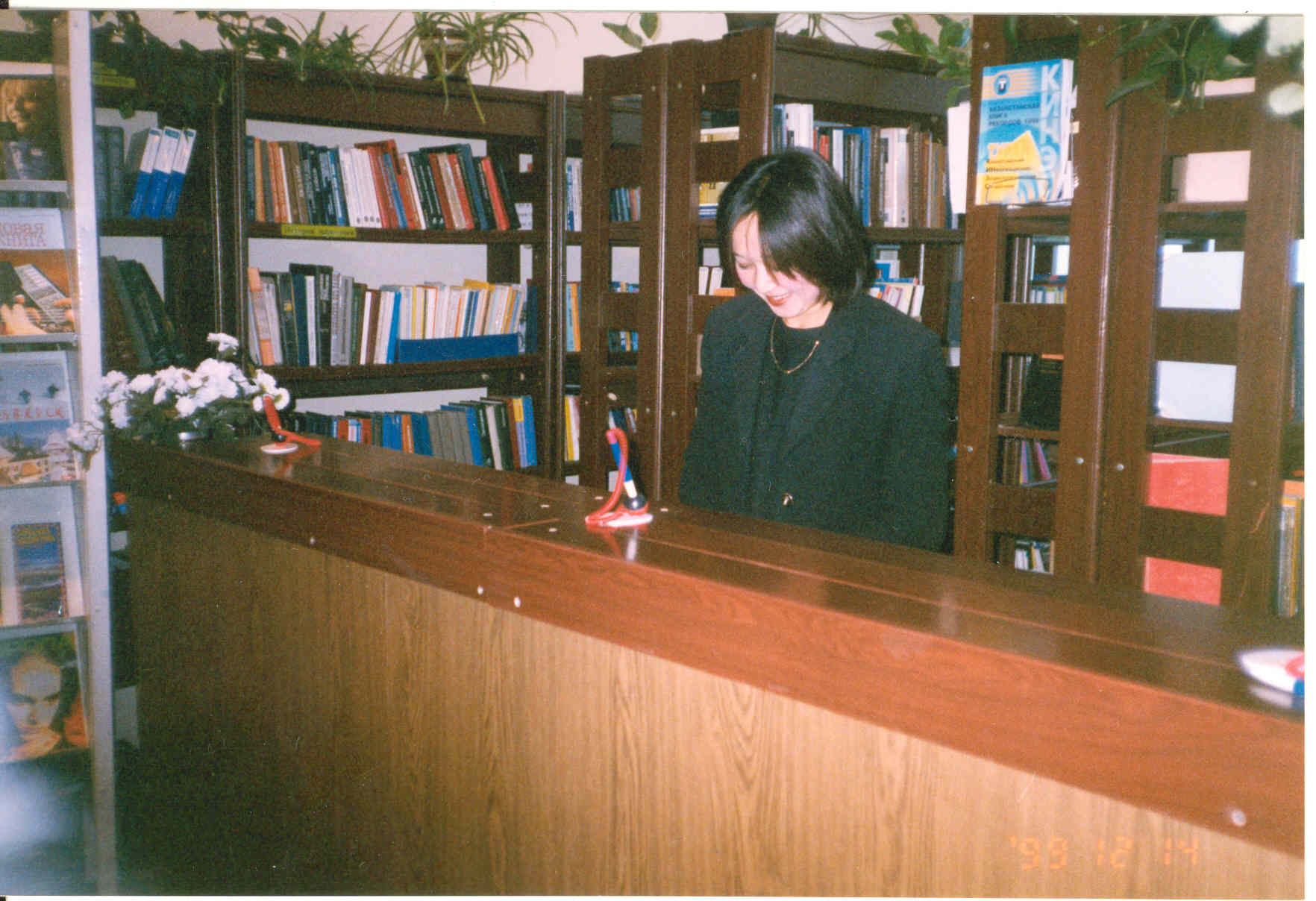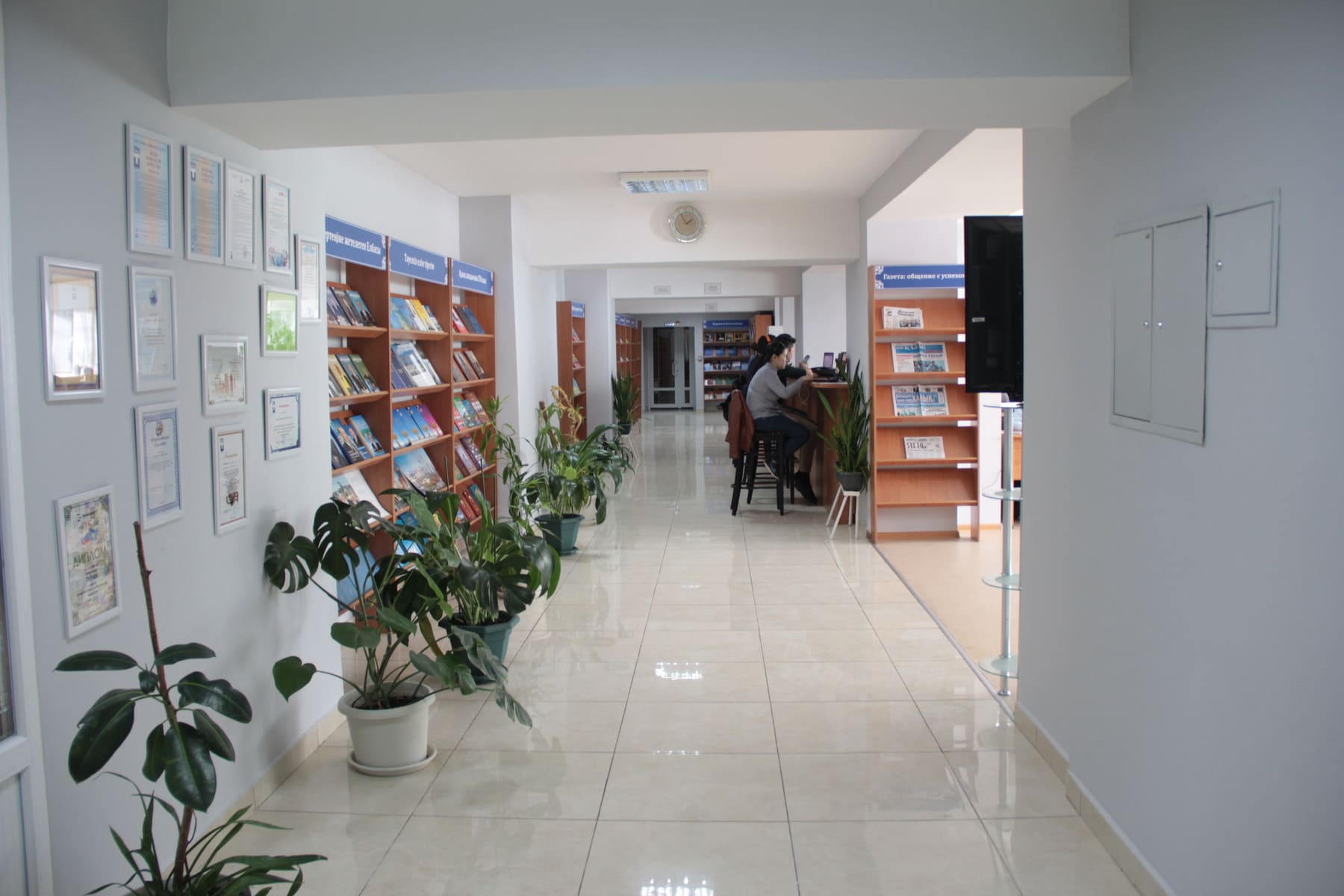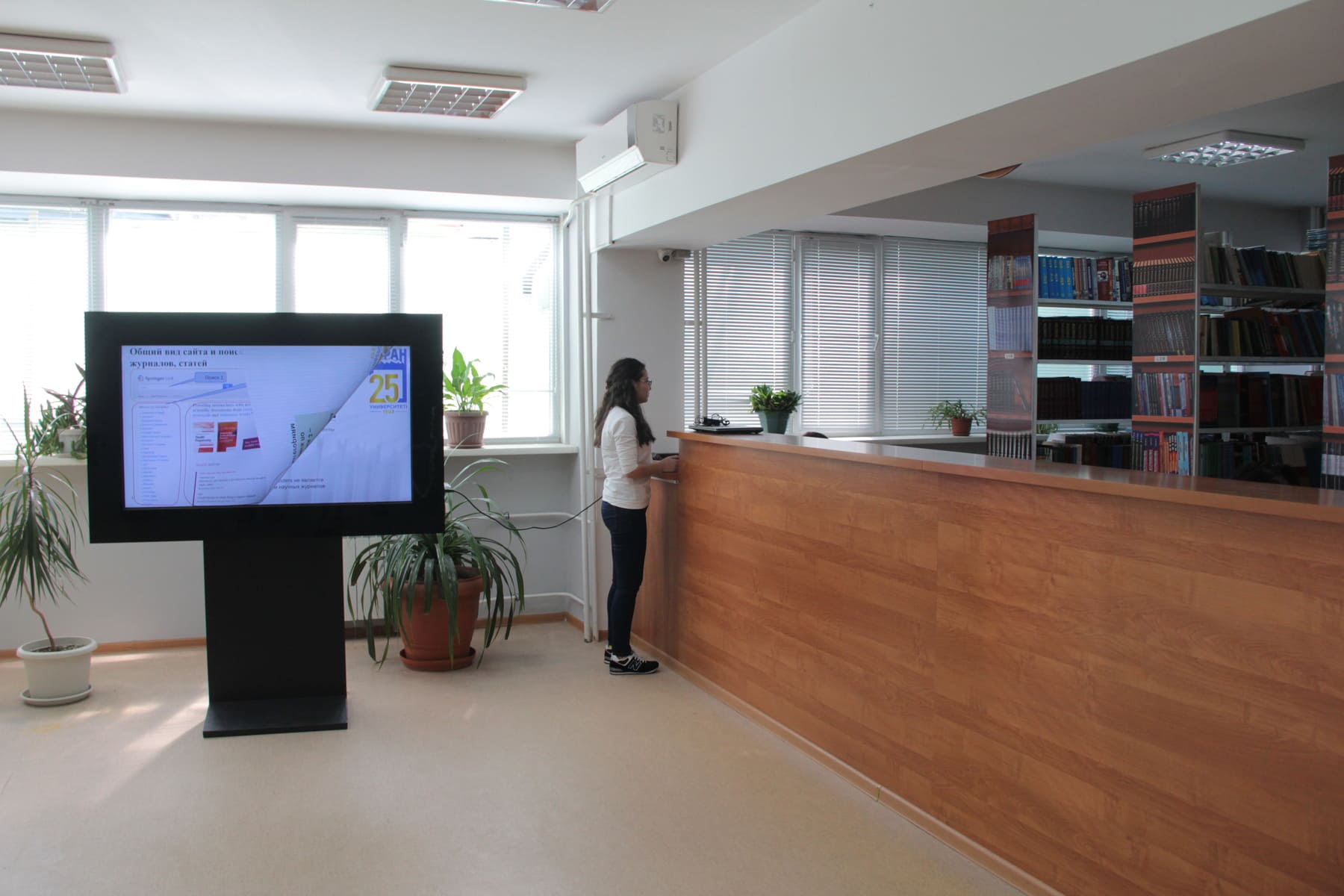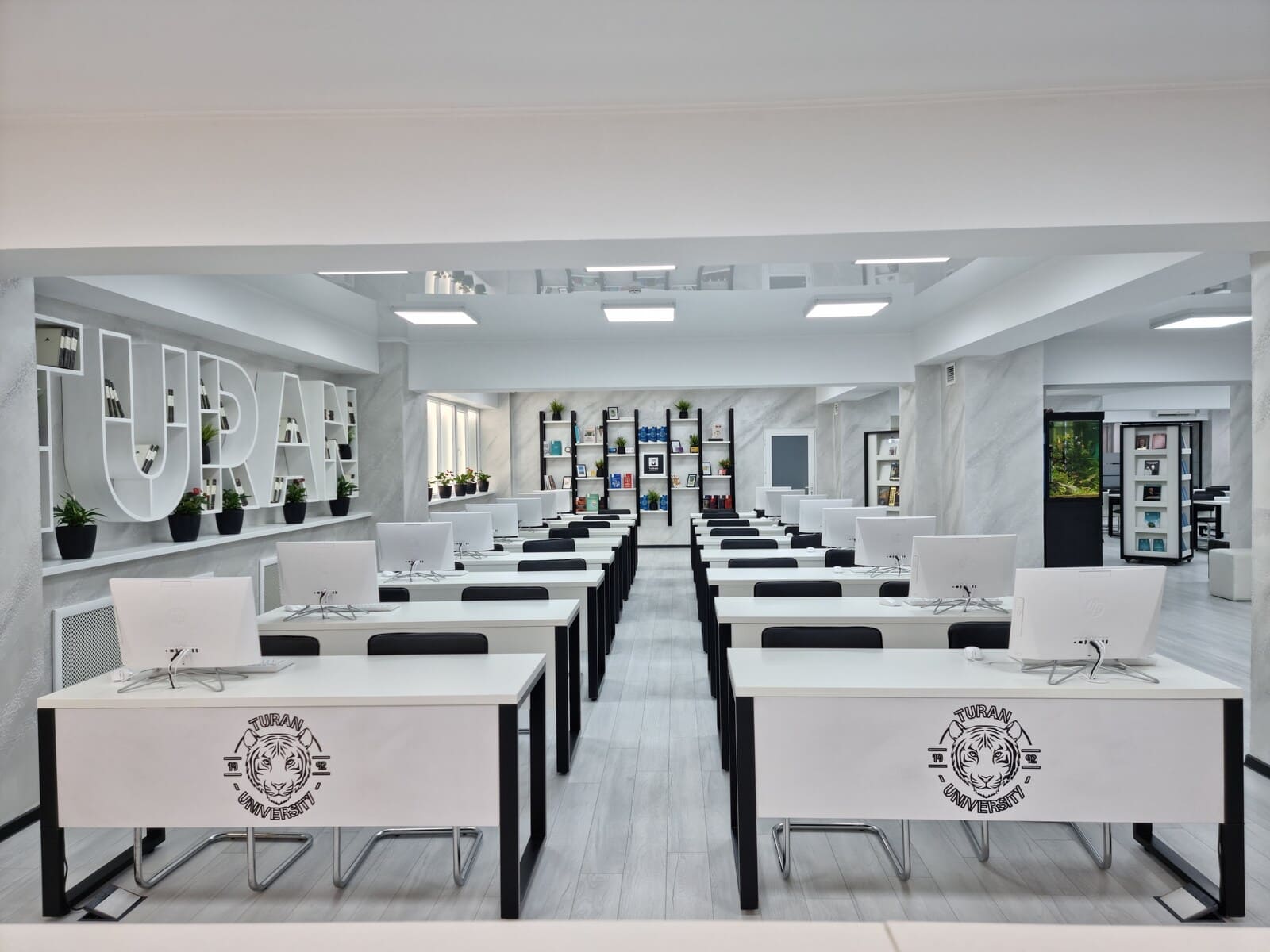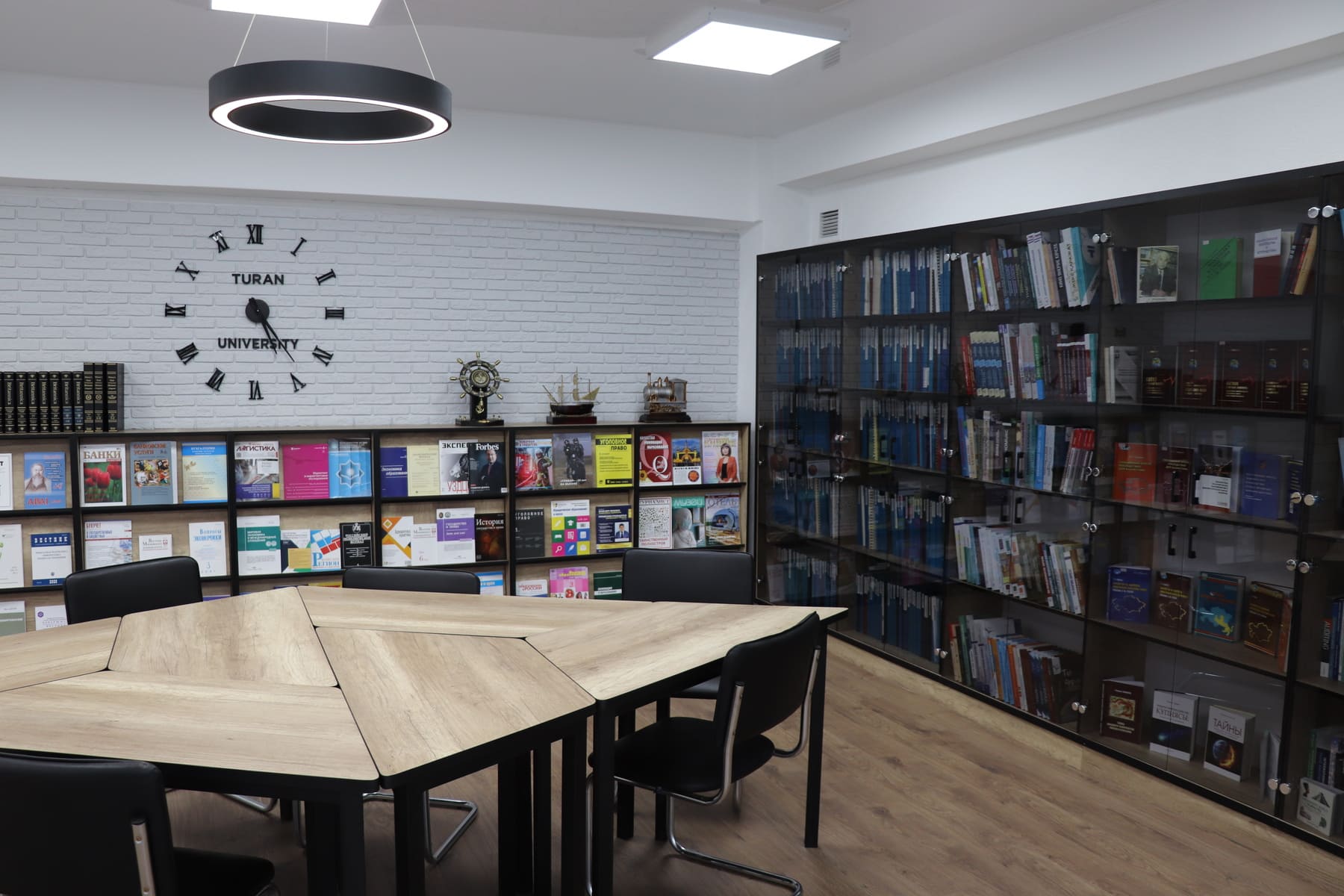Library History
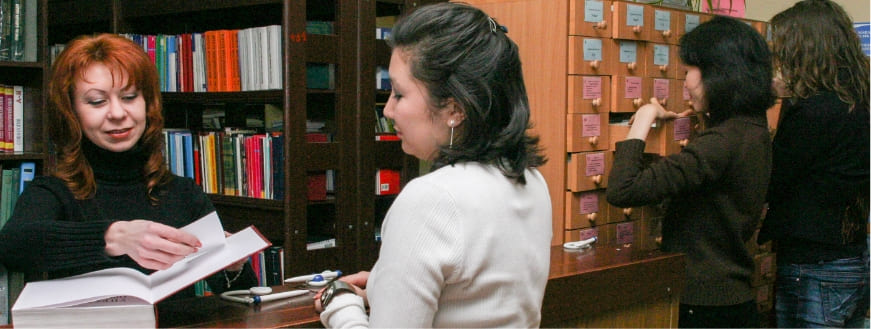
In 1992, the “Turan” University was founded, and the same year the university library opened its doors.
The time was economically unstable, everything, including education, science, and culture that seemed unshakable, fell apart. Libraries were closed more often than they were opened; as there was no funding for the most necessary things. In these difficult conditions, the library staff had to do almost the impossible: to create a fund of academic – methodological, scientific and reference literature in the shortest possible time. The founders of the university, realizing the importance and necessity of such a “repository of knowledge”, decided to deduct 25-30% of the financial proceeds for the formation of the book fund. The only condition was: the university library should ensure high quality of work, contribute to the improvement of academic and scientific processes, constantly develop and correspond to the reputation of the innovative and entrepreneurial type University.
In 2013, the library was moved to a new building and switched to the use of modern computer technologies.
⠀
Since 2015, the library of “Turan” University is part of the Information and Library Resources division of the IT and Information and Library Resources Department. Such a transition required fundamental changes in the production process of the “book purchase”: ordering, buying, accounting, cataloging, systematization, distribution by funds, and the transition to an electronic format for conducting all operations.
To improve the service quality to students and teachers of the university, the head of the IT and ILR department has developed an electronic library “Automated Library and Information System of “Turan” University” (ALISTU). ALISTU is an innovative tool of the modern library of “Turan” University.
In 2021, the library was reconstructed.
As a result, the total area of the reading hall has increased. Laptops have been replaced with desktop computers, for even higher Internet speed.
An interactive guide is available at the entrance to the library, so that each visitor can get the necessary information independently. There is a separate office for researchers, where master’s, doctoral students, and teachers can come to work with their laptops. Dissertations and periodicals are presented in this office.
During the fund formation, much attention is paid to scientific publications: monographs, textbooks and various manuals authored by both Kazakh and foreign scientists are widely presented here. There are many electronic resources available for readers (for more information, see the “Resources” section).


